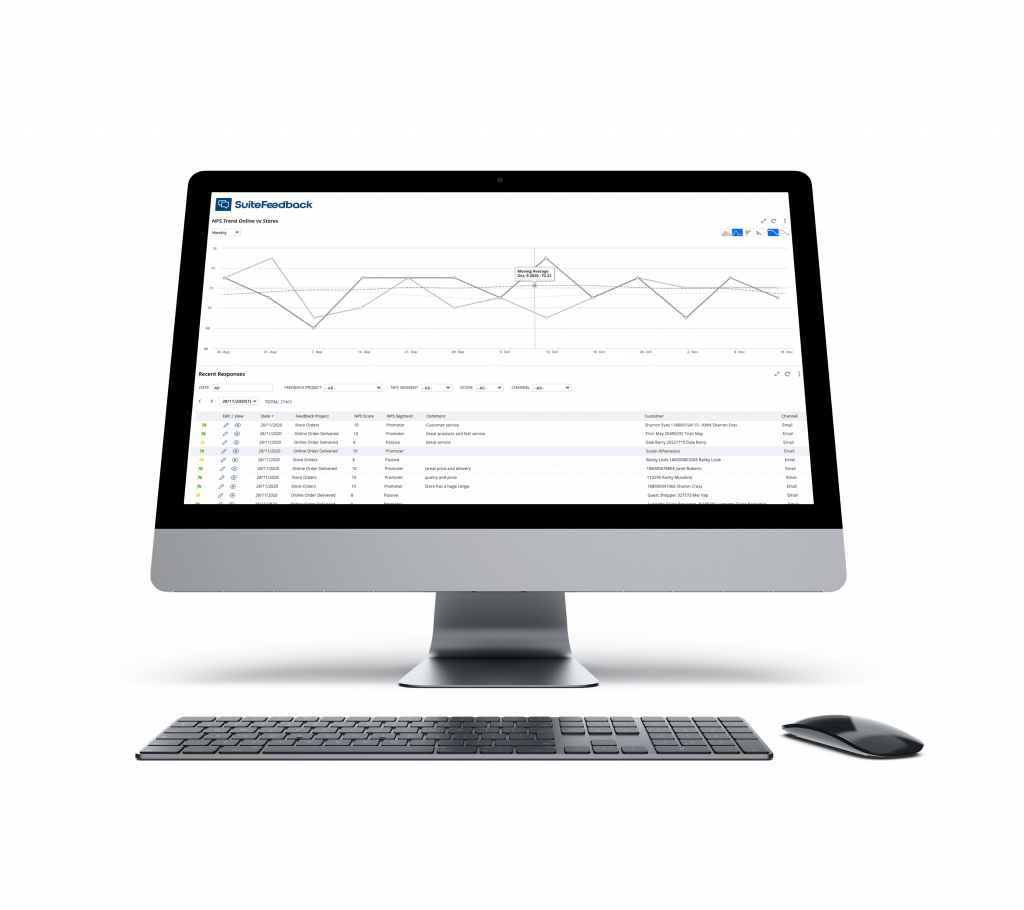A successful Voice of the Customer program requires integration with other systems for a holistic view of customer experience. The feedback obtained solely from customers along their journey, while compelling on its own, isn’t enough to drive strategic change across an organization. Data from places such as your CRM, ERP and contact centre infrastructure should be considered required to derive actionable, comprehensive insights from your VOC solution.
With all of these different business systems, it can also be difficult to choose which to integrate with your VOC platform and to differentiate between data that is important and that which is superfluous.
Benefits of Integration
While you shouldn’t need much convincing to integrate your systems, below are some of the innumerable practical benefits that can be gained from doing so.
- Gain a comprehensive view of the customer experience
- Adopt an evidence-based approach to decision making and change
- Dive deep into customer data so robust analysis can be performed
- Use customer demographics to understand the motive behind feedback
- Avoid silos by aligning your organisation around CX improvement
- Speed up business processes by housing all systems and data together
What To Integrate and Why
There are endless opportunities for integrations, many that are unique to a particular industry or company. While integration with nearly any system can be done, those listed below are those that we find to be the most common and most fundamental to almost every organisation.
CRM
Integrating with your CRM is one of the most important steps you can take to strengthen your VOC programme. A CRM integration allows you to skip over a lot of unnecessary questions to your customers thereby shortening your surveys. It connects all of your customer data (contact information, demographic information, etc.) to your survey so your analysis and close-the-loop processes can be streamlined. Using single sign-on, team members can respond to alerts, review feedback, contact the customer, view customer data, and ultimately close the loop with unhappy customers. Once integrated, you can also really easily track a customer’s lifetime journey with your business to see how their patterns of feedback evolve over time.
Unlike some other business system integrations, this one is two-way. Your CRM feeds data about the customers into your VOC platform and the feedback gained from the VOC survey should be fed into the CRM to inform your dialogue with the customer (survey distribution, contact method preference, follow-ups to close the loop, etc.). The two systems should complement each other, adding value to both sides.
POS
Integrating with your point-of-sale system provides important insight into customer motivations and allows you to track their spending patterns over their lifetime as a customer. It helps you gain an understanding of how much they spent, what they purchased, which employee helped them, the time of purchase, etc. which can inform your analysis of their feedback.
Employee Data
Linking employee data can come from a range of sources, it depends on where it is housed, so you could be pulling data directly, from a Human Capital Management solution or it could be coming via CRM, regardless of where the metadata is sourced, VOC can provide you with a unique opportunity to track employee or team progress and performance at any point in the customer journey. Whether a customer has an amazing or terrible experience, you can analyse how and why different individuals, teams, departments, locations or regions are performing in a certain way. This can ultimately be invaluable so you can assess who deserves praise and who may need more training to be more effective in handling certain customer situations.
An added benefit of integrating employee data is that employees are then privy to understanding how their actions impact customer experience as a whole. They may see customer interactions as just part of doing their job, but if they are able to learn from their own actions, they will feel more motivated to provide a better experience to customers.
Contact Centre
If you are sending out customer surveys based on contact centre interactions, we recommend having the infrastructure providers solution integrated with your VOC solution. In your analysis, you can isolate performance via the channel (IVR, email, chat) or by agent, team, nature of the request, or any other variable you see relevant to your contact centre’s performance.
With the contact centre, there are so many important metrics being monitored, integration with your VOC gives you a more comprehensive understanding of operations and performance and is essential for some of the key metrics such as NPS and customer effort.
Similarly to integrating employee data from outside the contact centre environment, it’s useful for tracking performance at both the agent and team level to see what’s working (or not) and why.
The Ultimate Value of Integration
The value of integration is undeniable and depending on how much analysis you are willing to do, the advantages are endless. Below are a few examples of how value can be derived from integrating your business systems with your VOC solution.
- Pinpoint fundamental CX problems or areas for improvement
- Gain insight to support new innovations or strategies
- Identify consistent patterns or flaws within the business
- Understand patterns across customer demographics
- Benchmark performance internally across business units, locations, teams, individuals, etc.
- Benchmark performance externally against competitors in your industry
Integration may seem like a lot of work, but if you choose the right VOC solution it should be absolutely seamless. You can find opportunities to integrate all kinds of systems with your VOC platform, be they operational, financial or qualitative. You’ve invested in each business system individually, so to make the most of each, integration is the logical decision.




